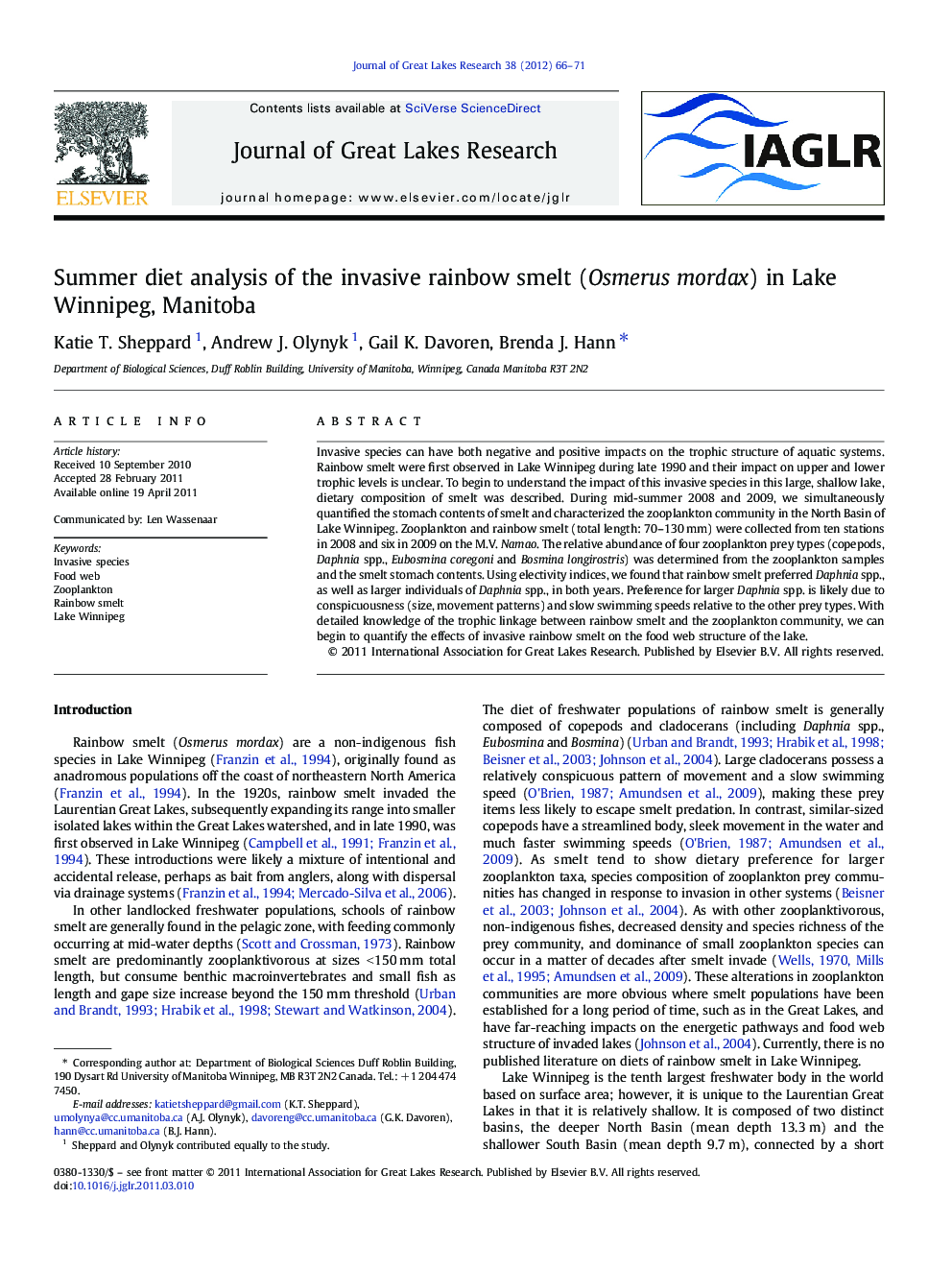| Article ID | Journal | Published Year | Pages | File Type |
|---|---|---|---|---|
| 4398820 | Journal of Great Lakes Research | 2012 | 6 Pages |
Abstract
Invasive species can have both negative and positive impacts on the trophic structure of aquatic systems. Rainbow smelt were first observed in Lake Winnipeg during late 1990 and their impact on upper and lower trophic levels is unclear. To begin to understand the impact of this invasive species in this large, shallow lake, dietary composition of smelt was described. During mid-summer 2008 and 2009, we simultaneously quantified the stomach contents of smelt and characterized the zooplankton community in the North Basin of Lake Winnipeg. Zooplankton and rainbow smelt (total length: 70-130Â mm) were collected from ten stations in 2008 and six in 2009 on the M.V. Namao. The relative abundance of four zooplankton prey types (copepods, Daphnia spp., Eubosmina coregoni and Bosmina longirostris) was determined from the zooplankton samples and the smelt stomach contents. Using electivity indices, we found that rainbow smelt preferred Daphnia spp., as well as larger individuals of Daphnia spp., in both years. Preference for larger Daphnia spp. is likely due to conspicuousness (size, movement patterns) and slow swimming speeds relative to the other prey types. With detailed knowledge of the trophic linkage between rainbow smelt and the zooplankton community, we can begin to quantify the effects of invasive rainbow smelt on the food web structure of the lake.
Related Topics
Physical Sciences and Engineering
Earth and Planetary Sciences
Earth and Planetary Sciences (General)
Authors
Katie T. Sheppard, Andrew J. Olynyk, Gail K. Davoren, Brenda J. Hann,
